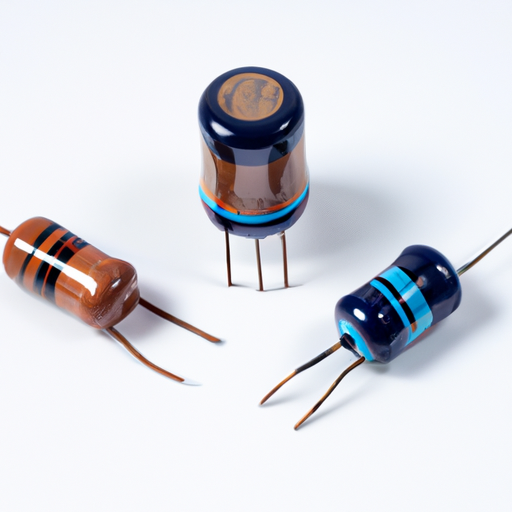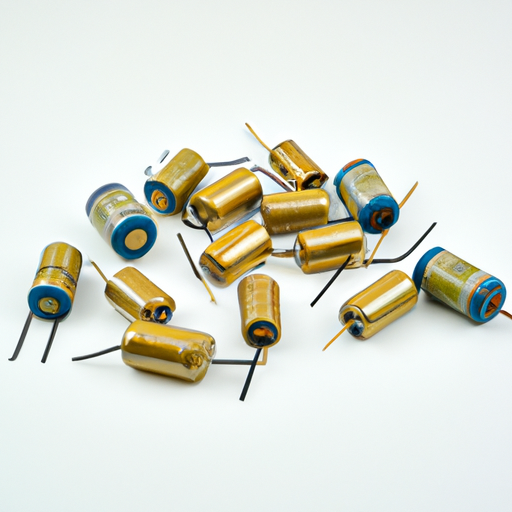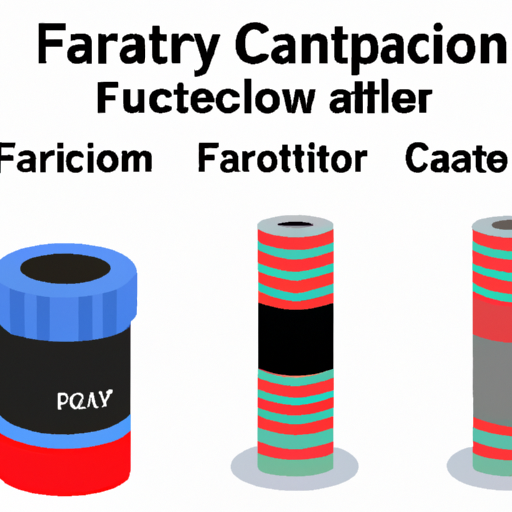Specifications of the latest capacitors
Specifications of the Latest Capacitors
I. Introduction
Capacitors are fundamental components in electronic circuits, serving as energy storage devices that can release energy when needed. They play a crucial role in various applications, from filtering signals to stabilizing voltage and power supply. As technology has advanced, so too has the design and functionality of capacitors, leading to a wide array of types and specifications that cater to the evolving needs of modern electronics. This blog post will explore the latest specifications of capacitors, their types, key characteristics, recent innovations, and applications across various industries.
II. Types of Capacitors
Capacitors come in several types, each with unique characteristics and applications. Understanding these types is essential for selecting the right capacitor for a specific application.
A. Ceramic Capacitors
Ceramic capacitors are among the most widely used capacitors due to their small size, low cost, and reliability. They are made from ceramic materials and are available in various capacitance values.
Characteristics: They exhibit low equivalent series resistance (ESR) and high stability over a range of temperatures and voltages.
Applications: Commonly used in decoupling and filtering applications in consumer electronics, such as smartphones and computers.
B. Electrolytic Capacitors
Electrolytic capacitors are polarized capacitors that offer high capacitance values in a relatively small package.
Characteristics: They have a higher capacitance per volume compared to other types but are limited by their voltage ratings and polarity.
Applications: Frequently used in power supply circuits, audio equipment, and energy storage applications.
C. Film Capacitors
Film capacitors use a thin plastic film as the dielectric material, providing excellent stability and low losses.
Characteristics: They are known for their high insulation resistance and low ESR, making them suitable for high-frequency applications.
Applications: Used in audio equipment, power electronics, and timing circuits.
D. Tantalum Capacitors
Tantalum capacitors are known for their high capacitance and reliability, making them suitable for compact electronic devices.
Characteristics: They have a stable capacitance over a wide temperature range and are less prone to failure compared to electrolytic capacitors.
Applications: Commonly found in mobile devices, medical equipment, and aerospace applications.
E. Supercapacitors
Supercapacitors, also known as ultracapacitors, bridge the gap between traditional capacitors and batteries, offering high energy storage capabilities.
Characteristics: They can store large amounts of energy and have a very high cycle life, but they typically have lower voltage ratings.
Applications: Used in energy storage systems, regenerative braking in electric vehicles, and backup power supplies.
III. Key Specifications of Modern Capacitors
When selecting capacitors for specific applications, several key specifications must be considered.
A. Capacitance Value
The capacitance value indicates the amount of electrical charge a capacitor can store, measured in Farads (F), microfarads (µF), or picofarads (pF).
Importance in Circuit Design: The capacitance value is critical in determining how a capacitor will perform in a circuit, influencing timing, filtering, and energy storage capabilities.
B. Voltage Rating
The voltage rating defines the maximum voltage a capacitor can handle without breaking down.
Breakdown Voltage and Safety Margins: It is essential to select capacitors with a voltage rating higher than the maximum voltage they will encounter in a circuit to ensure reliability and safety.
C. Equivalent Series Resistance (ESR)
ESR is a measure of the internal resistance of a capacitor, affecting its performance, especially in high-frequency applications.
Impact on Performance: Lower ESR values lead to better efficiency and reduced heat generation, making it a critical specification for power applications.
D. Temperature Coefficient
The temperature coefficient indicates how a capacitor's capacitance changes with temperature.
Types of Temperature Coefficients: Common types include X7R, which offers stable capacitance over a wide temperature range, and C0G, which provides excellent stability but at lower capacitance values.
E. Lifetime and Reliability
The lifespan of a capacitor can be influenced by factors such as temperature, voltage, and ripple current.
Importance of Reliability: In critical applications, such as medical devices and aerospace systems, selecting capacitors with high reliability and long lifetimes is paramount.
IV. Recent Innovations in Capacitor Technology
The capacitor industry has seen significant innovations in recent years, driven by the demand for higher performance and efficiency.
A. Advancements in Materials
New dielectric materials are being developed to enhance the performance of capacitors.
Impact on Performance and Efficiency: These materials can improve capacitance values, reduce losses, and increase the operating temperature range.
B. Miniaturization and High-Density Capacitors
As electronic devices become smaller, the demand for miniaturized capacitors has increased.
Trends in Size Reduction: Manufacturers are developing high-density capacitors that offer greater capacitance in smaller packages, making them ideal for portable electronics.
C. Enhanced Energy Density
Energy density is a critical factor for applications requiring efficient energy storage.
Implications for Energy Storage Solutions: Innovations in capacitor technology are leading to higher energy densities, making them suitable for applications like electric vehicles and renewable energy systems.
D. Environmental Considerations
With growing awareness of environmental issues, the capacitor industry is focusing on sustainability.
Development of Eco-Friendly Capacitors: Manufacturers are exploring biodegradable materials and recycling practices to minimize environmental impact.
V. Applications of Modern Capacitors
Capacitors are integral to various industries, each with unique requirements and applications.
A. Consumer Electronics
In consumer electronics, capacitors are essential for power management, signal processing, and noise reduction.
Role in Smartphones, Tablets, and Laptops: Capacitors help stabilize power supplies and filter out noise, ensuring smooth operation of devices.
B. Automotive Industry
The automotive industry relies heavily on capacitors for various applications, especially with the rise of electric vehicles.
Use in Electric Vehicles and Advanced Driver-Assistance Systems (ADAS): Capacitors are used in energy storage systems, regenerative braking, and electronic control units.
C. Renewable Energy Systems
Capacitors play a vital role in renewable energy systems, helping to manage power flow and improve efficiency.
Capacitors in Solar Inverters and Wind Turbines: They are used to smooth out voltage fluctuations and store energy for later use.
D. Industrial Applications
In industrial settings, capacitors are used in automation and control systems to ensure reliable operation.
Use in Automation and Control Systems: Capacitors help maintain stable power supplies and improve the performance of motors and drives.
VI. Conclusion
In summary, capacitors are essential components in modern electronics, with various types and specifications tailored to meet the demands of different applications. As technology continues to evolve, so too will capacitor technology, with advancements in materials, miniaturization, and energy density. For design engineers and manufacturers, staying updated with the latest specifications is crucial for ensuring the reliability and performance of electronic devices.
VII. References
1. "Capacitor Technology: A Comprehensive Guide," Journal of Electronic Materials.
2. "Advancements in Capacitor Design," IEEE Transactions on Industrial Electronics.
3. "The Role of Capacitors in Renewable Energy Systems," Renewable Energy Journal.
4. "Understanding Capacitor Specifications," Electronics Weekly.
5. "Eco-Friendly Capacitors: Trends and Innovations," Environmental Science & Technology.
By understanding the specifications and innovations in capacitor technology, engineers can make informed decisions that enhance the performance and reliability of their electronic designs.






